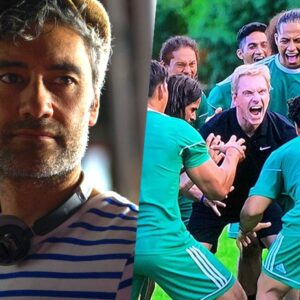
TORONTO – The 17th Annual Film and Media Arts Festival began on Wednesday, October 19 until Sunday, October 23 and featured a well-awaited for short film called “Fresh Takes,” by Katsition:ni Fox from Akwesasne.
The film is enveloped in the Ohero:kon (under the husk) Rites of Passage – which was formerly only offered in Akwesasne, but has since grown – and the experiences of participants Kaienkwinehtha Ransom and Kasennakohe David, who each completed a full four years of fasting and learning about Haudenosaunee culture. But, the two weren’t the only youth affected positively by the experience.
In the crowd during the screening of the film and from Akwesasne territory, eighteen year-old Dawson George explained that he began his rite of passage in Ohero:kon three years ago as well. The film itself has left an emotional impact on those that have seen it, and George explained that he would describe his feelings after seeing the short film as “hopeful.”
“The short film is awesome and it was really put together well. It made me feel happy to know that it will continue to grow,” said George.
George said he moved to Six Nations to begin the Onkwawenna Kentiohkwa Language program, and that the rites of passage has helped him to “go on a different path.”
“Ohero:kon has for sure helped me to better myself as a person, I always wanted to be a good person. Ohero:kon helped and encouraged me to be on the path that I am now,” said George. “My mother made me go. I wasn’t necessarily for or against going, she just pushed me to go, encouraged me.”
Nineteen year-old Jessica Jamieson from Six Nations, began her journey through Ohero:kon three years ago. She is now entering her fourth year as a participant in the fasting; meaning she will undergo four consecutive days of fasting with guidance. Jamieson said “being involved has helped me tremendously.”
“Through the teachings and fasting, it has shown me a lot about myself and my gifts and it’s really shaped me as a person” said Jamieson. “It’s a long process and once you’re in it, the people that make themselves available to you in the Ohero:kon circle will be there for you throughout the entire thing. For me, it was very easy to stay committed to my rites of passage because of the community support,” she said.
Her decision to enter the program came out of her desire to learn as much as she could about Haudenosaunee culture, and also backed her desire to learn the language. When asked if the program has helped her to become the person she is today she replied “yes, absolutely!”
“I think what makes a youths rites of passage so powerful, is that there is a lot of communication between the youth and the older people. Keeping that communication open is what, I think personally, holds up the vulnerable youth,” she said. “Because its a hard commitment to make for some because a lot of our peers aren’t walking the same way, and its easy to put your ceremony aside to hang out with them because you don’t want to be forgotten by them or left out. But when the older ones are there for you, it makes things not as hard because you have the strongest support and encouragement from them.”
If she had to describe the short film in one word she would describe is as “beautiful.”
“At first I was kind of apprehensive because I know how powerful and private this process is, and to have it out in the world for everyone to see, I was kind of worried,” she said. “But I’m glad that it just showed the gist of what it is and not go into great detail because these kind of things we need to protect and be stingy of because of how strong the ceremony is. But the film was beautifully done. Katsitsionni fox is an amazing film maker!”
By capturing the emotion of those involved in the rites of passage and displaying it, it is easy to recognize that the interest in culture and language is thriving in youth today.











